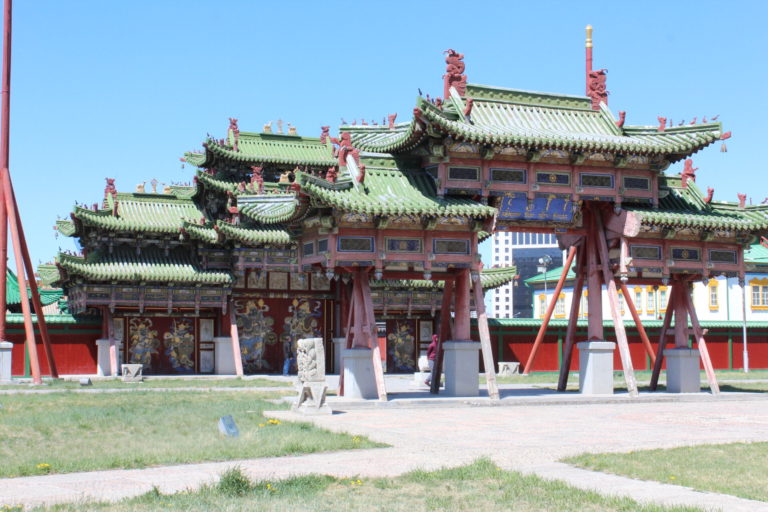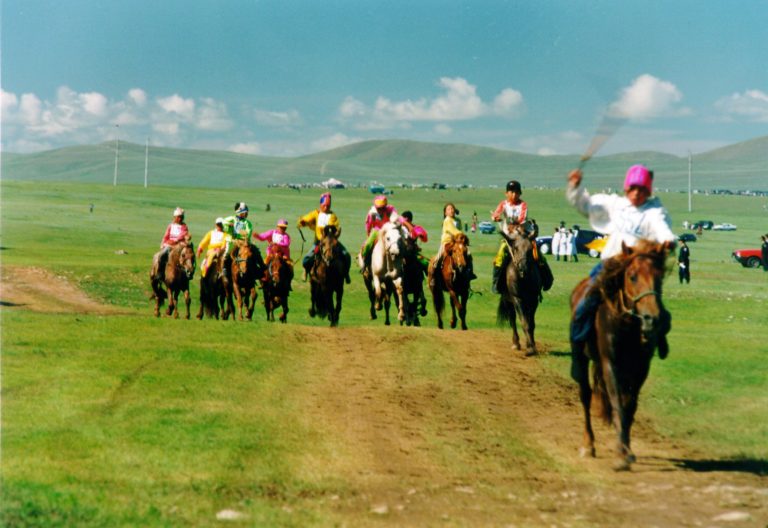A Glimpse into the nomadic world: Mongolia
The land of the Eternal Blue Sky.

Mongolia, enthralls the visitors with its picturesque natural sceneries, varied landscapes, vast open steppes, paleontological and archeological heritages blended with nomadic lifestyle, and culture of the natives which adds an amazing twist. It is a paradise for adventure lovers as horse riding, hunting and hiking, are very common in the country. In a rendezvous with H.E. Mr. Gonching Ganbold, Ambassador of Mongolia to India. (He has served in Foreign and Finance Ministries, embassies in Washington D.C., London , National Security Council, Mongolia, contributes articles to media, translated two dozen books)

1. Tell us some details about Mongolia. What does it offer to its first-time visitors?
Pre-historical vestiges of stone monuments, deer stones, rock drawings and forgotten tombs always stir the intellectually inspired travellers. One can also get acquainted with nearly two dozen, well maintained museums, including the new one of dinosaurs. Shamanism had prevailed in Mongolia and inserted its mark on folk culture and the traditional way of living. It is gradually giving way to Buddhism while Kazakhs residing in western Mongolia adhere to Islam. The different religious faiths add their respective shades to the present-day spiritual landscape in Mongolia. Bird watchers, hikers, horse riders, even fans of auto rally, are fond of open steppe to see rising sun in Gobi and twinkling stars at night.

2. Which are the three must visit destination in Mongolia.
Visiting Mongolia one can enjoy prominent destinations, such as the ancient Mongolian capital, Chinggis Khan’s fabled city Kharkhorim. It was founded in 1220 in the Orkhon valley, at the crossroads of Silk Roads. One may proceed to Ulaan Tsutgalan water-fall on Orkhon river. Covered with the edge of Siberian taiga and steppe, Khan Khentii is the birthplace of Chinggis Khaan deeply revered in 13th century annals titled ‘The Secret History of Mongols’. This sacred land in the northeast of Ulaanbaatar has become a pretty popular itinerary for soul searchers.
Terelj is a wonderful valley in proximity of Ulaanbaatar. It has spectacular green meadows carpeted with dazzling varieties of edelweiss and other wild flowers, amazing rock formations against a backdrop of pine-clad mountains and wooded streams. There are numerous children’s camps around Ulaanbaatar including Nairamdal which is in a spectacular combination of location with mountains and steppe.
Khuvsgul known as ‘Blue Pearl’ is Mongolia’s largest and deepest lake in the northern part of the country dotted with deluxe tourist camps.

3. Which is the ideal time of the year to visit Mongolia.
We have six months of the sub-zero temperature. However, with over 250 sunny days, arid climate even in winter, one can enjoy.

4. How is Naadam, Mongolia’s National Day celebrated? Share some details on this.
One can enjoy a wide range of colourful events, including Mongolia’s National Day ‘Naadam’- which is celebrated in a traditional way from 11 July to 13 July. Wrestling, horse racing, archery and ankle bone shooting are a part of the celebrations during the festival. It begins with an elaborate opening ceremony featuring dancers, athletes, horse riders, musicians and an open-air gala concert in the evening in which there is no spectator but everyone is a performer. The Mongolian traditional sport – Wrestling – is an untimed competition with no weight category in which wrestlers lose if they touch the ground with any part of their body other than feet or hands. One can witness and participate in this, not only in the capital city but also in all the local centres. Unlike western equestrian sport, which consists of short sprints in equidromes generally not much longer than a couple of kilometers, Mongolian horse racing in the Naadam festival is a cross-country event with races of 15 to 30 km depending on the horses’ age. For example, a two- year -old horse races for 10 miles and a seven- year- old horse races for 17 miles. Up to hundreds of horses from any part of Mongolia can be chosen to participate in this.
In the archery competition, both male and female marksmen can participate. Mongolian archery is unique for having not only one target but dozens of cubic. After each hit the second repairs the damaged wall and makes it ready for the next attempt. The winners of the contest are granted the titles of ‘National Marksman” or ‘National Markswoman’.

5. Nomadic life and Mongolia are synonyms. Tell us more about this.
Throughout centuries Mongolians have been engaging with pastoral animal husbandry, which is intrinsically interwoven with their nomadic life style. Even today nearly 40 per cent of households look after over eight crores of sheep, goats, horses, camels and cows that turned into peculiar attraction for urban people. The vast expanse and hospitable nomadic life style make Mongolia not only conducive for horse riding but also mould it into a lifelong wonderful experience. With few roads, trackless mountains and open steppe with rich fauna and flora, they offer excellent opportunity for bird watching. Mongolia is a marvelous place for fishing and bird watching or photographing of scenery.

6. Tell us about the local food of the country. Are there any options for vegetarians also?
The Mongolians are nomads so their foods are directly related to animal husbandry, such as cattle, horses, camels, yaks, sheep, and goats, as well as game. They take most of their protein-intake from meat, either cooked, as soups or steamed, boiled or fried as buuz, khuushuur and bansh, which is conducive for them to withstand the cold weather and physical work since in winter temperatures drops as low as −50 °C and outdoor routine requires sufficient energy. Milk and cream are used to make a variety of beverages, including hard drinks, as well as cheese and similar products. Their common food is cooked mutton, usually with side dishes of vegetables and flour products. The steamed dumplings called buuz, are filled with mutton. Other types of dumplings are boiled in water called bansh, or deep-fried in edible oil named huushuur, similar to samosa. Other dishes combine the meat with rice or fresh noodles made into various choemen-tsuivan stews or noodle soups. In summer time they take mostly dairy products and vegetarian food. Mongolian tea is really distinct and delicious, and one ought to taste it. It is something like a main dish. However, you will find dozens of Indian restaurants, including the South Indian variety as well.

7. Do we have shopping options in the country? What are the must-buy souvenirs for first–time visitors?
In cities one would find shopping malls with all known brand items, like any other urban place. However, small boutiques with handicrafts, antiquaries and art pieces are far more interesting, where musical instruments and national gowns, headgears, postal stamps, colourful paintings and high quality CD’s can be bought at reasonable prices. I recommend my friends to visit exhibition halls, theatre and monasteries. By the way, women painters in Mongolia are known for their skillful shuffling of bright colours and imagination. In Mongolia one would find highly developed classic ballet and operas along with fascinating folk arts. It is the only place where you would enjoy in opera theatres singers who perform in Italian, in monasteries monks chanting in Tibetan, on the street, youths chirruping in English, elders speak in Russian, at flea market merchant gossiping in Chinese, Korean soap operas are endlessly floating on TV channels, while a large number of intellectuals converse in fluent German, but everybody has a soft corner in their hearts towards India.

8. Which is your favourite destination in the world, besides Mongolia?
North East India, Gangottri. Oophs! I said more than single word.

9. Which is the best way to reach Mongolia?
Depending on how much time you have, there are options. One may travel via Seoul, Tokyo, Hong Kong, Bangkok or Frankfurt, Moscow and Istanbul. Indian passport holders are free from visa fee. On arrival visa is also available.

10. Do we have any similarities between India and Mongolia?
Yes, we are similar with our open heartedness and hospitality. There is no complexity at all, so Mongolians in most cases are straightforward and honest in expressing their opinions. Cab drivers are talkative and entertaining.
Source: https://traveljingles.com/a-glimpse-into-the-nomadic-world-mongolia/


